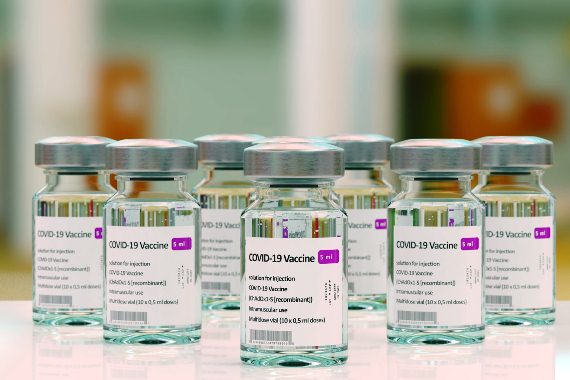- Export growth of intermediate goods was between 20% and 45% year-on-year, with a world average of 27%
- The product category “Other industrial supplies” made up almost half of total intermediate goods exports in the third quarter and also grew the fastest
- Vaccine and metal products are included in the category and were behind the strong trade in intermediate goods in the third quarter
- China remains the top exporter, its exports of intermediate goods exports up 36% in the third quarter
A rise in traded inputs for medical goods and metal products and increases across all regions helped drive the growth of world exports of intermediate goods in the third quarter of 2021, according to a World Trade Organization (WTO) report.
Global exports of intermediate goods grew by 27% year-on-year in the third quarter of 2021. Although growth was down from the 47% rise recorded in the second quarter, exports increased in all regions in the third quarter, expanding between 20% and 45% year-on-year.
Trade in intermediate goods, which are inputs used to produce a final product, is an indicator of the robustness of global supply chains. Intermediate goods range from crops used in food production to textiles and metals needed to manufacture goods.
The product category “Other industrial supplies” made up almost half of total intermediate goods exports in the third quarter. It also grew the fastest among all intermediate goods categories, rising 38% year-on-year and amounting to US$1.225 billion.
This category comprises intermediate goods such as vaccine products, medical parts and accessories, diagnostic or laboratory reagents, and other medical intermediate goods. The category also includes raw or semi-manufactured metals such as copper cathodes, articles of iron or steel and aluminium. The high growth rate of the category follows a 52% rise recorded in the second quarter.
World exports of transport equipment parts and accessories, however, grew more slowly at 8% year-on-year in the third quarter compared with 69% in the second quarter.
The rise in intermediate goods exports of ores and minerals also slowed to 16% compared with an average growth of 47% during the first half of the year. This was partly due to falling iron ore prices in September 2021.
Belgium, which counts vaccine products as its most traded intermediate goods, posted the largest growth, recording a 46% rise in intermediate goods exports in the third quarter following a 64% increase in the second quarter.
China’s intermediate goods exports grew by 36% and the country continues to garner the largest shares of world intermediate goods exports.
For the third consecutive quarter, India had the highest growth of intermediate goods imports (65%), due mainly to the upward momentum of non-monetary gold imports (161% growth).
All regions posted increases and surpassed intermediate goods export levels of 2019 before the COVID-19 pandemic struck. Africa and South and Central America continued to see the strongest growth in exports.
Intra-regional trade within South and Central America increased the most among all regions (56%).
Exports within Asian supply chains rose by 29% in the third quarter of 2021, dealing with the exchange of IT components (memories, integrated circuits, processors), parts and accessories for telephone sets and high-tech products as well as iron ore concentrates used in the production of steel.









